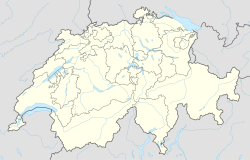Counts of Neuchâtel
| Neuchâtel | ||
|---|---|---|

Neuchâtel in 2001
|
||
|
||
| Coordinates: 47°0′N 6°56′E / 47.000°N 6.933°ECoordinates: 47°0′N 6°56′E / 47.000°N 6.933°E | ||
| Country | Switzerland | |
| Canton | Neuchâtel | |
| District | Neuchâtel | |
| Government | ||
| • Executive |
Conseil communal CC with 5 members |
|
| • Mayor |
Président du Conseil communal (list) Thomas Facchinetti SPS/PSS (as of June 2015) |
|
| • Parliament |
Conseil général CG with 41 members |
|
| Area | ||
| • Total | 18.1 km2 (7.0 sq mi) | |
| Elevation | 430 m (1,410 ft) | |
| Population (Dec 2015) | ||
| • Total | 33,712 | |
| • Density | 1,900/km2 (4,800/sq mi) | |
| Postal code | 2000 | |
| SFOS number | 6458 | |
| Surrounded by | Auvernier, Boudry, Chabrey (VD), Colombier, Cressier, Cudrefin (VD), Delley-Portalban (FR), Enges, Fenin-Vilars-Saules, Hauterive, Peseux, Saint-Blaise, Savagnier, Valangin | |
| Twin towns | Aarau (Switzerland), Besançon (France), Sansepolcro (Italy) | |
| Website |
www SFSO statistics |
|
Neuchâtel (French pronunciation: [nøʃatɛl]); (Old French: neu(f) "new" and "castle" (French: château); German: Neuenburg; Italian: Neocastello or Nuovocastello; Romansh: Neuchâtel or Neufchâtel) is the capital of the Swiss canton of Neuchâtel on Lake Neuchâtel.
The city has as of December 2013[update] approximately 33,600 inhabitants (80,000 in the metropolitan area). The city is sometimes referred to historically by the German name ![]() Neuenburg , which has the same meaning. It was originally part of the Holy Roman Empire and later under Prussian control from 1707 until 1848.
Neuenburg , which has the same meaning. It was originally part of the Holy Roman Empire and later under Prussian control from 1707 until 1848.
The official language of Neuchâtel is French.
...
Wikipedia



